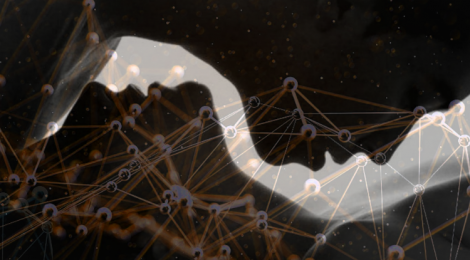
Slow Fusion
The problem with the usual nuclear fusion is that it delivers energy too fast
Until just now it was believed the slowest nuclear reactions had time constants faster that e-17 of a second.
But now we have discovered the throttle and instead of having to deal with fusing too fast with all those unwanted energetic radiations, we can engage in fusion nice and slow, slower than the speed of a sensuous slow waltz.
That brings a smile to Mother Natures face and mine too!
When two hydrogen atoms fuse it has been thought that such incredible forces are involved that only very machismo forces can overcome the inhibitions, Coulombic forces, that keep the two lovers apart. Physics, in spite of being called the Queen of Science, has always been dominated by male egos and hence notions. Naturally it might take a womans touch to show an alternative path, and lead us to understand the joys of Slow Fusion.

Sometimes it takes a woman’s Silke touch and more important a woman’s scientific point of view to show the beauty in nature.
Enter just such a woman, Prof. Dr. Silke Bühler-Paschen (seen at her chalkboard) of the Vienna University of Technology. She and her team have just now introduced some feminine sanity to the world of atomic physics, one might say broadening that field into a full-fledged field of atom ecology. Her experiments to create Weyl-Kondo quantum materials and to engage in classical natural history pursuit to observe and catalog the characteristics of that new ecosystem are nothing short of truly enlightening. Science can and indeed it seems must be sexy.
Her findings come to us via work just published in the journal Proceedings of the National Academy of Sciences. Her team at the Vienna University of Technology carried out experimental work to develop new materials, and a team at Rice University helped with the theoretical work. What they created that led to the discovery of slow fusion is a new form of matter called a quantum material.
When it comes to fusion we want a lover with a slow hand.
For a few years now this new form of matter that appears to be buried within our collection of usual materials in its common characteristics, but it carries some secret behaviours that are beautifully mysterious and evocative. It seems that one of the keys to Silke’s quantum material is that it likes everything to go nice and slow. Crazy particles not yet fully understood but which are thought to be collections of something like electrons don’t move at the normal speed near that of the speed of light but rather move slower than the speed of sound in these quantum materials.
Perhaps this Pointer Sisters video can help us understand how to change nuclear fusion from the speedy and dangerous form into something much more amenable to being useful in our lives. Understanding the Poynting vector helps.
The beauty of SLOW FUSION is that we can enjoy the benefits it has to offer with none of the dangerous side effects.
Slow fusion or as it has been known by another name, Cold Fusion is a remarkable discovery that has been ridiculed by countless macho men of physics. Like soccer hooligans these single minded midgets have cast aspersions on the fabulous discovery of Martin Fleischmann and Stanley Pons of March 1989. The presence of fusion without the high-speed nuclear emissions was taken to be in opposition to the ruling male dominated physics dogma. No speed no fusion. The physics community cowered, ducked, and covered when some few hooligans amongst them defined the field with their banal tirades.
Here’s an example — a number of MIT professors/hooligan/speed freaks, such as MIT Plasma Fusion Center Director Ronald R. Parker, made widely reported public statements that drew into question the possibility that cold fusion was real and in hand, it could never be allowed to cross the minds of those that paid for their employment. So in an effort to smear cold fusion research and researchers so no one would take it serious, the members of his department (including some scientists from other departments) took every opportunity they could to attack Pons and Fleischmann in an effort fully supported and endorsed and bearing the imprimatur of the prestigious Massachusetts Institute of Technology.
In 1989, shortly after the announcement of the discovery of Cold Fusion in Utah, Ronald R. Parker and Ronald G. Ballinger had a phone call with Nick Tate of the Boston Herald in 1989. They were talking to him about a potential story about cold fusion, hoping that he would write a hit piece. In their conversation, which is transcribed in an article exposing their sinister efforts, Parker uses the fraud word in his description of their cold fusion work. He also talks about how he is setting up another “blast” against cold fusion with Bob Bazell, a reporter with NBC. With the MIT institution backing this ‘fake news’ its no wonder that scores of hot fusion machismo hooligans would pile on and as a result cold fusion would languish for decades while tens of billions poured into the black hole that is their so-called hot fusion science.
But lets no longer digress on the question of Cold Fusion being in question as a real and practical clean green energy source with unlimited potential and truly able to be delivered to save our world at a cost too cheap to meter.
In praise of women

For a fuller explanation of the role of Weyl-Kondo_like phenomenon that provides proof of slow quantum nuclear effects in those here-to-fore uncommonly observed atom ecologies — click to read more.
What the wonderful woman professor in Austria has given us is evidence of just how in materials that are surely consistent with materials used in many if not all cold fusion/lenr experiments and technologies. In her work there is the new understanding of how slow quantum physics allows cold slow fusion to occur.
While this new research may still be of interest primarily to other quantum researchers, Prof Buehler-Paschen is clear about where it could ultimately lead.
“Currently we design these materials to find new effects,” she said. “We search for them because these effects could be very useful, with technological applications.”
Two miracles
There remain some mysteries in cold fusion amongst which are the clearly missing the fast highly energetic radiations that accompany typical HOT FUSIONS. In the now increasingly well-defined Weyl-Kondo-like quantum materials there exist large entangled cohorts of new crazy particles.
These crazy particles, which my former science partner Edward Teller shortly before his death described in my experiments, to be similar crazy particles and named them Mischugenons. They are a characteristic of cold slow fusion. On one hand being akin to electrons they ought to move at near the speed of light but instead they move every so slowly, about 1/millionth of the speed of light, even slower than phonons! This this new quantum material characteristic easily serves as the missing links for both miracles required of cold fusion.
The first miracle is in providing the means to overcome the Coulomb barrier their apparent massive and hugely charged slow wandering nature easily finds them in between ultra-dense dueterons where they screen the Coulombic repulsion. These mischugenons have a virtual atomic infinity of time all the while using its great mass to help pull deuterons together.
The second miracle comes in how they help in managing/entangling the fusion energy released by D+D→ 4He allowing that energy to be released ever so slowly dissipates that energy braodly thus rendering that expected fast energetic radiation into a super slow process as in non-energetic radiative process. No gammas, no high energy alphas, no neutrons…
When those particle interact with deuterons sharing the same quantum material atom ecology the massive electron-like crazy particles may readily catalyze cold fusion. Being cold and slow fusion the emission of energy as fast high energy particles or photons is readily and preferentially replaced by a wide-scale emission and sharing of phonons (sound particles) in the broadly entangled lattice, entanglement we’ve got in spades in quantum materials.
Here’s the HOT Fusion alternative to Slow Fusion also very appropriately put to music by those wonderful other nuclear physicists, the Pointer Sisters. The chaos of neutrons that come with Hot Fusion is something no one really wants to experience, thanks to cold slow fusion we have a safe clean green energy source for the future.
Read https://regnum.ru/news/innovatio/2355913.html about Martin Fleischmann and Stanley Pons in Russian.